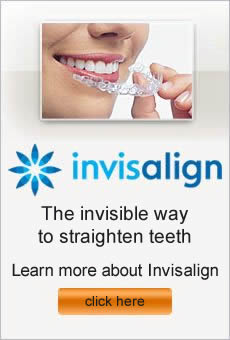One of the tools orthodontists may use to help you achieve a perfect smile is called a palatal expander, which is an appliance that gently widens the upper jaw so that it fits properly with the lower jaw. The goal is to expand the jaw to avoid overcrowding of the teeth. Not every patient needs an expander, but if you do here are some common questions answered.
Who needs an expander?
Your orthodontist will evaluate if your jaw needs to be widened in order to get the results you desire. Expanders work best for people under age 15, because the jaw bones are still pliable and the roof of the mouth has not completely finished growing.
How does it work?
The palatal expander is made up of a screw attached to your upper teeth by bands secured around your molars. It is activated by turning the screw with a key. You will do this yourself after specific instructions from your orthodontist. The expander remains attached in your mouth until your doctor indicates it’s time to remove it.
Does it hurt?
As with many treatments for your mouth, it will take a few days to get used to the palatal expander. There may be some lisping at first, but your speech will return to normal as you get used to the device. You might feel slight pressure when the expander is activated with the key. Pain is rarely experienced, but over-the-counter pain medication usually relieves the discomfort.
How long do I have to wear the expander?
Treatment length varies among patients, but often expanders remain in place for 3-6 months. It is vital to follow your orthodontist’s instructions for activating the expander, in order to achieve the desired results within the anticipated timeframe. You will have periodic visits to your doctor to make sure the appliance is in the right place and is tight enough.
It’s not enough just to wear braces on your teeth; you have to hold up your end of the bargain. You must care for them as your orthodontist instructs, and that includes sticking to the diet guidelines. Some foods can loosen or break braces, which will probably mean you’ll have to wear the braces for a longer period of time. Follow these rules to achieve quicker treatment and a great smile.
DON’T eat hard foods
Anything hard cannot safely be chewed with braces. Avoid items like raw apples and carrots, popcorn, nuts, hard candies, crunchy chips, corn on the cob, and ice.
DON’T eat sticky or chewy foods
Braces can be pulled apart by sticky foods. Don’t eat foods like taffy, caramels, gummy candy, jelly beans, caramel apples, and peanut brittle.
DON’T eat sugary foods
Braces make it harder to keep your teeth clean, and sugar can cause cavities, tarter buildup, and stains. Eat sparingly foods like soda, fruit juices, ice cream, candy, cake, cookies, and pie. If you do eat foods high in sugar, brush your teeth immediately afterwards.
DON’T eat highly acidic foods
Items high in acid content can lead to permanent stains and tooth damage. Avoid items such as sodas (even diet ones), citrus fruits, and lemon juice.
DON’T use your front teeth to bite foods
You can loosen your brackets by biting into foods with your front teeth. Cut meat off the bone from ribs or fried chicken, use a knife to cut corn off the cob, and tear or cut pizza into bite-sized pieces.
If you wear braces on your teeth, there’s a chance that you will be one of the many orthodontic patients who must wear rubber bands as part of their treatment. They play an important role in achieving a perfect smile.
How do rubber bands help?
Braces by themselves only move teeth along the upper or lower sets of teeth, but rubber bands apply constant pressure to move the lower jaw and upper jaw into proper alignment with each other. The goal of rubber bands is to achieve a perfect bite. Repairing the bite is often the longest and most difficult phase of the orthodontic process, but rubber bands help move your jaw into the correct position more quickly. The way that the bands are attached to the braces is customized to each patient to direct tension in the best way for you.
How much should I wear them?
Orthodontists recommend that you wear rubber bands all day, removing them only to brush, floss, replace with new bands, or occasionally to eat. Most of the time you should eat with them in place, as it is helpful for your mouth to learn to work with that tension. Rubber bands should be worn when sleeping and playing sports. Leaving them off for even just one day can erase progress you’ve made.
Will I get used to them?
It takes a few days to learn to take the rubber bands in and out, but after some practice it becomes simple. It’s normal for your teeth, jaws, and mouth to be a bit sore at first, but that goes away. However, if you do not wear your rubber bands consistently, you will have constant discomfort because your mouth won’t get used to them.
What if I don’t wear them consistently?
To achieve the best orthodontic results in the shortest amount of time, you must be committed to wearing your rubber bands as your orthodontist has recommended. Wearing them intermittently will negatively affect your progress, so it’s vital to wear them full time.
Pacifiers have been used by parents for many years to soothe babies, who are born with a strong sucking reflex and find security in the pacifier. It is a normal part of development, but parents often wonder how long it is appropriate to allow their child to suck on a pacifier. One of the concerns is that it can negatively affect a child’s dental health. Here are some things to consider about long-term pacifier use.
Age
Most children stop sucking on pacifiers between the ages of two and four. Pacifier use after age four may lead to dental problems, with the risk becoming greater the older the child becomes.
Teeth
Dentists say that older children who use pacifiers have increased risk of protruding front teeth, described as teeth that slant outward. Also, the bottom front teeth may tilt in. Longer pacifier use can delay losing the front baby teeth at a normal time, and may postpone the emergence of permanent teeth.
Jaw alignment
Prolonged pacifier use may increase the risk of an improper bite. Often this means narrowing of the upper jaw compared to the lower jaw, which is commonly called a cross bite. Another common effect is an open bite, which is a gap between the upper and lower front teeth when the mouth is closed. Also, there is an increase of overjet, described as a horizontal projection of the upper teeth past the lower teeth.
Correcting problems
For many children, the effects of prolonged pacifier use is self-correcting, but only if the child stops using a pacifier before the permanent teeth emerge. Orthodontists say that teeth tend to go back to their ideal positions if the habit stops before the adult teeth come in. However, some of the more severe outcomes such as cross bite do not correct on their own. Orthodontists can use a variety of appliances to coax the teeth and jaw into proper alignment.
If you or your child needs orthodontic treatment, you may feel slightly overwhelmed by the details and terminology. Developing an understanding of the lingo will help you feel more comfortable with the process. After performing a thorough exam and evaluation, your orthodontist will explain treatment recommendations.
Some of the common orthodontic terms you may hear include:
Archwire
Designed to provide a guide for your teeth as they move, an archwire metal wire that attaches to the brackets. Your orthodontist will change the archwire periodically during treatment.
Brackets
A ceramic or metal piece cemented to the front of your teeth and used to hold the archwire in place.
Cross bite
Also called an under bite, a cross bite occurs when the lower teeth overlap with the upper teeth, which can cause gum recession and uneven tooth wear.
Expander
Often used before braces, an expander is an appliance used to make your jaw bigger.
Ligation
The process of attaching the archwire to your brackets.
Malocclusion
A misalignment or issue with the teeth and the way the upper and lower teeth fit together.
Orthodontics
The dental specialty dealing with preventing and correcting irregularities with the teeth. To be accredited as an orthodontist, a dentist must complete two to three years of post-graduate training after dental school.
Spacer
The small rubber device used to produce space between teeth so that the bands can be placed.
Retainer
Worn after the orthodontist removes your braces, a retainer attaches to the upper and lower teeth to keep them from shifting into the incorrect position. Retainers can be removable or bonded in place.



